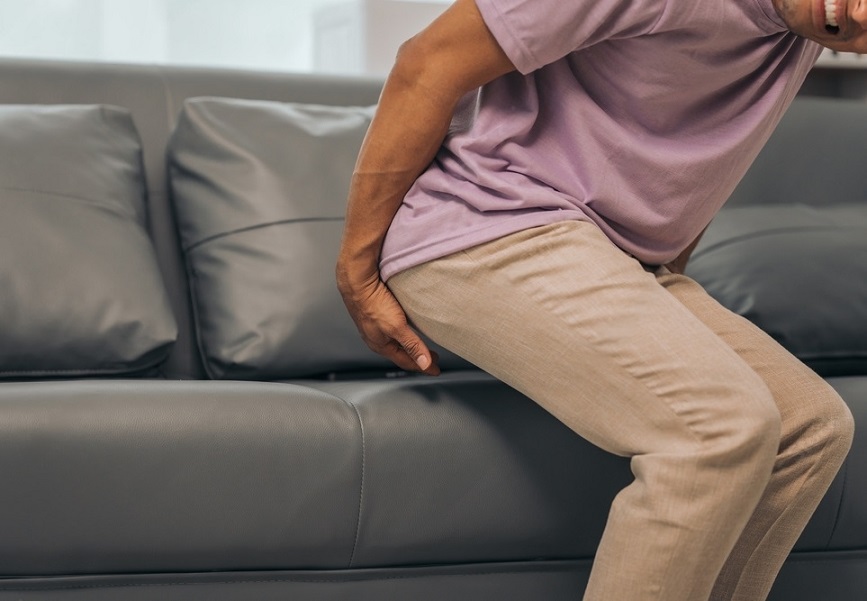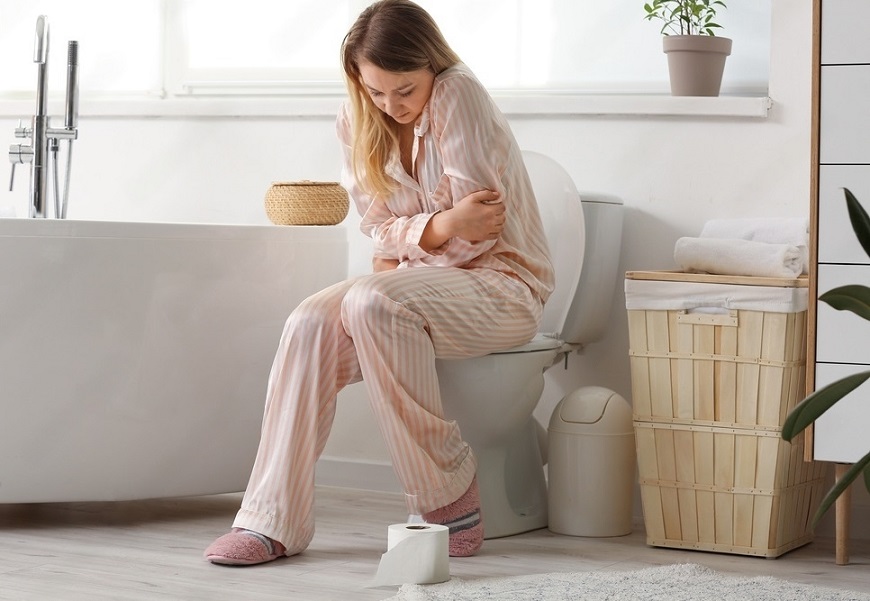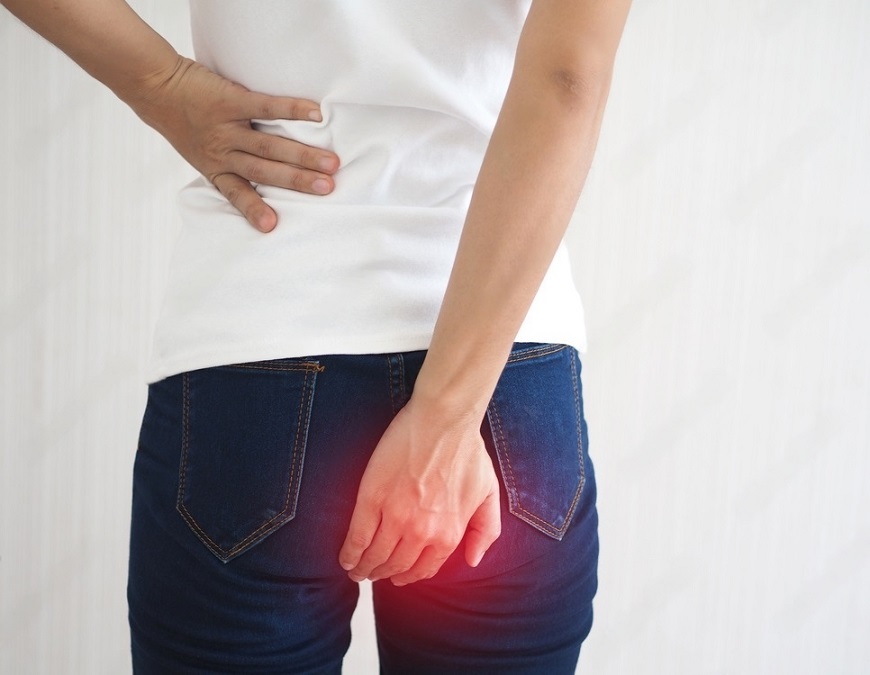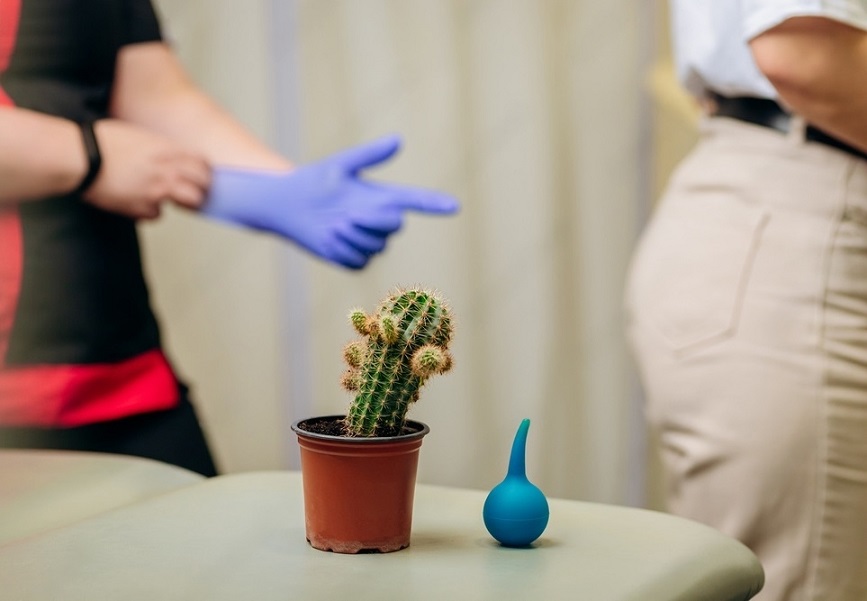Table of Contents
Anal fissures might sound like a complicated medical term, but they’re simply painful tears in the lining of the anus. They can make daily activities like sitting, passing stool, or even walking incredibly uncomfortable. Fortunately, there’s a simple and effective way to prevent them: bidets. In this article, we’ll explore how bidets work and how they can help keep anal fissures at bay.

Understanding Anal Fissures
What Are Anal Fissures?
Anal fissures are small tears in the skin around the anus. They can occur for various reasons, including passing hard or large stools, chronic diarrhea, or even childbirth. The primary symptom of anal fissures is pain, especially during bowel movements. In some cases, bleeding may also occur. If left untreated, anal fissures can lead to further complications such as infections or chronic pain.
The Importance of Prevention
Preventing anal fissures is essential for maintaining overall anal health and preventing unnecessary discomfort. While treatments are available, prevention is always better than cure. One effective way to prevent anal fissures is by maintaining proper hygiene in the anal area.

Bidets: An Overview
What Are Bidets?
A bidet is a bathroom fixture designed to clean the genital and anal areas after using the toilet. It looks somewhat like a low sink or basin and is usually situated next to the toilet. There are different types of bidets, including standalone units and toilet seat attachments.
Types of Bidets:
Standalone Bidets:
- These are separate fixtures positioned next to the toilet.
- They typically resemble a low, basin-like structure with a faucet or spray nozzle.
- Standalone bidets require additional space and plumbing adjustments for installation.
Toilet Seat Attachments:
- These are attachments that can be added to existing toilet seats.
- They come in various designs, including handheld sprayers, nozzle attachments, or integrated bidet seats.
- Toilet seat attachments are more convenient and affordable than standalone bidets and require minimal installation effort.
How Do Bidets Work?
Bidets work by using a stream of water to cleanse the genital and anal areas after using the toilet. Here’s a step-by-step breakdown of how bidets typically operate:
Activation:
- Bidets can be activated in several ways, depending on the type of bidet.
- Some bidets have manual controls, such as levers or buttons, which users can operate to initiate the cleansing process.
- Others feature sensor-based activation, where the bidet automatically starts when someone sits on the toilet or approaches the bidet.
Adjustment Settings:
- Before or during use, users can adjust various settings to customize their cleansing experience.
- These settings may include water pressure, temperature, and nozzle position.
- Adjusting the settings ensures that the water stream is comfortable and effective for each individual’s preferences and needs.
Water Spray:
- Once activated and settings adjusted, the bidet sprays a stream of water onto the targeted areas.
- The water stream is directed towards the genital and anal regions, thoroughly cleansing them after bowel movements.
- The pressure and pattern of the water stream can be adjusted to provide gentle yet effective cleaning without causing discomfort or irritation.
Cleansing Process:
- The cleansing process typically lasts for a few seconds to a minute, depending on individual preferences and bidet settings.
- During this time, users may move slightly to ensure thorough coverage of the entire area.
- Some bidets may offer additional features such as pulsating or oscillating water streams for enhanced cleaning.
Optional Features:
- In addition to basic cleansing functions, many bidets come with optional features for added comfort and convenience.
- These features may include:
- Air drying: After cleansing, some bidets offer a gentle stream of warm air to dry the washed areas.
- Deodorizers: Some bidet models are equipped with built-in deodorizers to neutralize odors during and after use.
- Heated seats: Certain bidets come with heated seats to enhance comfort, especially during colder seasons or in chilly environments.
Completion and Shutdown:
- Once the cleansing process is complete, users can deactivate the bidet using the same controls used for activation.
- The bidet may automatically shut off after a predetermined duration or when the user moves away from the toilet.

Benefits of Bidets in Preventing Anal Fissures
Gentle Cleansing Mechanism
Unlike traditional methods such as toilet paper, which can be abrasive and irritating to the skin, bidets offer a gentle and thorough cleaning experience. The water stream effectively removes fecal matter without the need for harsh rubbing, reducing the risk of skin tears or irritation.
Reduction of Irritation and Inflammation
Regular use of bidets can help reduce irritation and inflammation in the anal area, which are common triggers for anal fissures. By keeping the area clean and free from harmful bacteria, bidets promote faster healing of existing fissures and prevent new ones from forming.
Promotion of Proper Hygiene
Proper hygiene is crucial for preventing anal fissures and other anal health issues. Bidets provide a more hygienic alternative to toilet paper, ensuring that the anal area is thoroughly cleansed after each bowel movement. This helps reduce the risk of bacterial infections and maintains overall anal health.
Potential to Prevent Recurrence
In addition to preventing initial onset, bidets also have the potential to prevent the recurrence of anal fissures. By consistently keeping the anal area clean and free from irritation, bidets create an environment that is less conducive to the development of fissures, reducing the likelihood of future episodes.
Scientific Evidence Supporting Bidets’ Efficacy
Research Studies on Bidet Usage and Anal Health
Numerous studies have demonstrated the effectiveness of bidets in promoting anal hygiene and preventing various anal health issues, including anal fissures. A study published in the Journal of Clinical Gastroenterology found that bidet use significantly reduced the incidence of anal fissures and other perianal problems compared to toilet paper alone.
Expert Opinions and Medical Recommendations
Medical experts widely recommend bidets as part of a comprehensive approach to anal hygiene and health maintenance. Dr. Sarah Smith, a gastroenterologist, emphasizes the importance of proper cleansing in preventing anal fissures. She notes that bidets offer a gentle and effective way to clean the anal area without causing further irritation or damage.

Practical Considerations for Using Bidets
Installation and Accessibility
Installing a bidet in your bathroom is a straightforward process that can greatly enhance your hygiene and comfort. Here’s a guide to help you understand how to install a bidet and ensure accessibility:
Choose the Right Bidet:
- Before installation, select the type of bidet that best suits your needs and preferences. Options include standalone bidets and toilet seat attachments.
- Consider factors such as available space, plumbing requirements, and budget when choosing a bidet model.
Gather Necessary Tools and Materials:
- Depending on the type of bidet and your existing bathroom setup, you may need various tools and materials for installation.
- Common tools include a wrench, screwdriver, and adjustable pliers.
- Materials such as Teflon tape, mounting brackets, and screws may also be required.
Prepare the Bathroom:
- Clear the area around the toilet to provide ample space for installation.
- Turn off the water supply to the toilet by shutting off the shut-off valve located behind or beside the toilet.
Install the Bidet:
- For standalone bidets, follow the manufacturer’s instructions for plumbing and installation. This may involve connecting the bidet to the water supply and drainage pipes.
- For toilet seat attachments, remove the existing toilet seat and install the bidet according to the manufacturer’s instructions. This usually involves securing the attachment to the toilet bowl and connecting it to the water supply.
Adjust Settings and Test Functionality:
- Once installed, adjust the settings of the bidet to your preferred water pressure, temperature, and nozzle position.
- Test the functionality of the bidet to ensure that it sprays water accurately and effectively.
Ensure Accessibility:
- Make sure that the bidet is easily accessible for all users, including those with mobility limitations.
- Install grab bars or handrails near the toilet to provide support and stability for users who may need assistance.
- Consider the height and placement of the bidet to ensure that it can be comfortably used by individuals of varying heights and abilities.
Regular Maintenance:
- To keep your bidet functioning properly, perform regular maintenance tasks such as cleaning the nozzle and checking for leaks.
- Follow the manufacturer’s guidelines for cleaning and maintenance to ensure optimal performance and hygiene.
By following these steps, you can successfully install a bidet in your bathroom and ensure accessibility for all users. Bidets offer numerous benefits, including improved hygiene, comfort, and convenience, making them a valuable addition to any bathroom.
Top of Form
Maintenance and Cleaning Tips
Proper maintenance and cleaning are essential to ensure that your bidet functions effectively and remains hygienic. Here are some tips to help you maintain your bidet:
Regular Cleaning:
- Clean the exterior of the bidet regularly using a mild, non-abrasive cleaner and a soft cloth.
- Pay special attention to areas that come into contact with hands or water to prevent the buildup of dirt and grime.
Clean the Nozzle:
- The nozzle of the bidet should be cleaned regularly to prevent the buildup of bacteria and debris.
- Follow the manufacturer’s instructions for removing and cleaning the nozzle. This may involve using a soft brush or cloth to gently scrub the nozzle and ensure thorough cleaning.
- Use mild soap and water to clean the nozzle, avoiding harsh chemicals that may damage the bidet or irritate the skin.
Descale the Bidet:
- If you live in an area with hard water, mineral deposits may accumulate inside the bidet over time.
- Periodically descale the bidet to remove these deposits and maintain optimal performance.
- Use a descaling solution recommended by the manufacturer and follow the instructions carefully to avoid damaging the bidet.
Check for Leaks:
- Regularly inspect the bidet for any signs of leaks or water damage.
- Check the connections between the bidet and the water supply to ensure that they are secure and free from leaks.
- If you notice any leaks, tighten the connections or replace damaged parts as needed to prevent water damage and maintain proper functioning.
Replace Filters and Cartridges:
- If your bidet is equipped with filters or cartridges, follow the manufacturer’s recommendations for replacement intervals.
- Regularly replacing filters and cartridges helps ensure that the water used for cleansing remains clean and free from impurities.
Avoid Harsh Chemicals:
- When cleaning your bidet, avoid using harsh chemicals or abrasive cleaners that may damage the bidet’s components or irritate the skin.
- Stick to mild, non-abrasive cleaners and gentle cleaning techniques to preserve the integrity of the bidet and maintain hygiene.
Perform Routine Maintenance:
- In addition to regular cleaning, perform routine maintenance tasks such as checking for loose screws or fittings.
- Tighten any loose screws or fittings to prevent them from coming undone and causing potential damage to the bidet.
Addressing Common Misconceptions About Bidets
Despite their numerous benefits, bidets are still relatively underutilized in many parts of the world, primarily due to misconceptions and cultural barriers. Common myths about bidets include concerns about water cleanliness, discomfort, and embarrassment. However, modern bidet systems address these concerns with features such as adjustable water temperature, air drying, and discreet designs.

Conclusion
Bidets offer a simple yet effective solution for preventing anal fissures and maintaining overall anal health. Their gentle cleansing mechanism, reduction of irritation and inflammation, promotion of proper hygiene, and potential to prevent recurrence make them a valuable addition to any bathroom. By incorporating bidets into your daily hygiene routine, you can enjoy a cleaner, healthier, and more comfortable experience in the bathroom.
